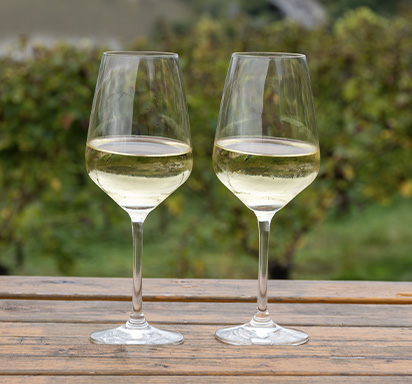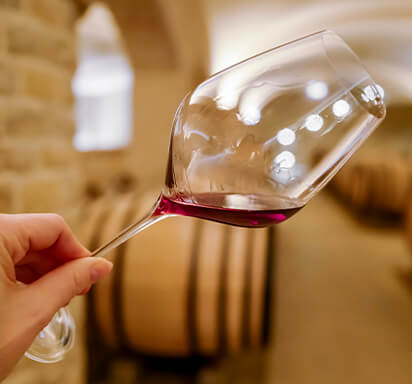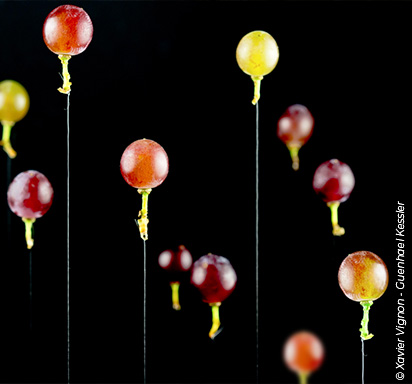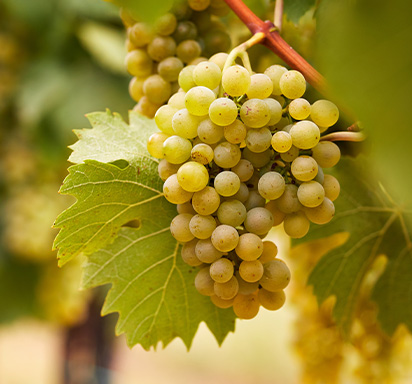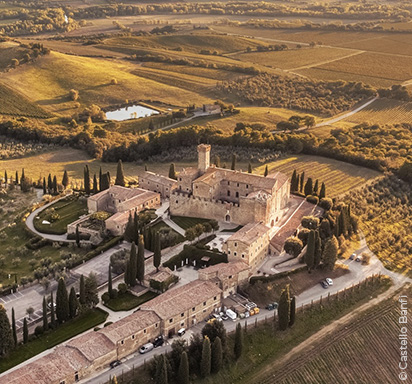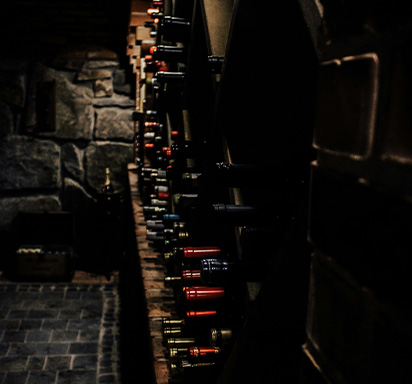Wine Calories | How many calories in red wine?
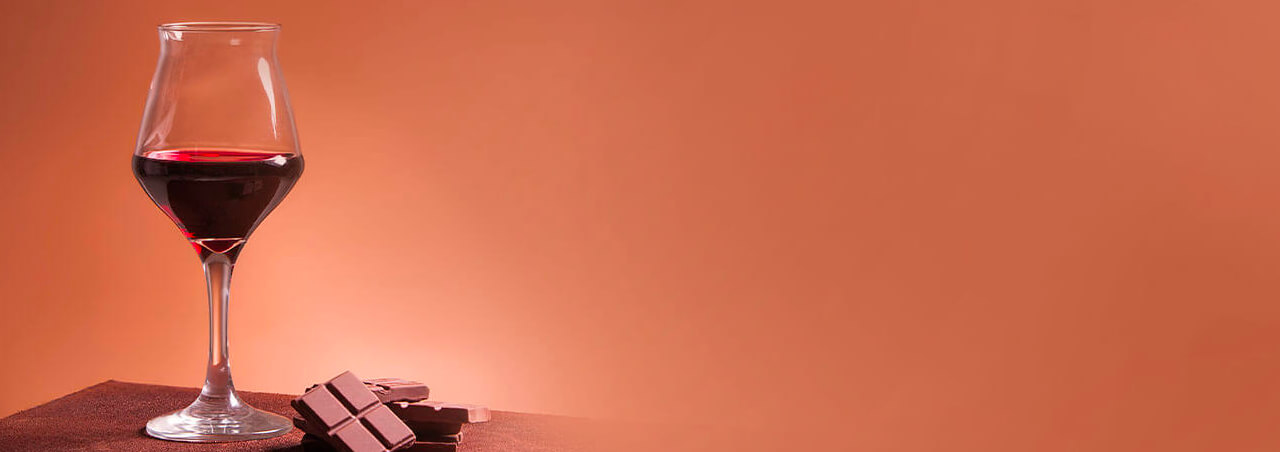
Nothing hits the spot after a long week like drinking a nice glass of red wine with some charcuterie or cheese. But have you ever wondered about the number of calories in red wine?
Unfortunately, red wine calories do exist. Just like with everything else delicious, there are calories in a glass of wine. But just how many calories in your glass will depend on a series of parameters, most importantly the alcohol volume (abv) and sugar content in your red wine glass. Let’s take a closer look at how to calculate the calories in a bottle of red wine.
WHERE DO WINE CALORIES COME FROM?
First, it is important to consider where wine calories actually come from. During the wine production process, yeasts break down the naturally occurring sugar in the grape juice and convert this sugar to alcohol and carbon dioxide. The carbon dioxide escapes in the case of still wines or is trapped as gas in the wine, in the case of sparkling wine. Either way, it does not contribute calories. However, the alcohol and the sugar that remains undigested by the yeast (residual sugar) serve as sources of calories in wine.
Sugar is a carbohydrate, which adds around 4 calories per gram to wine. So, the number of calories in your wine glass will depend partially on the amount of residual sugar. A light-bodied red wine, like a Pinot Noir, may have around 3-4 grams of carbs in a 150mL pour, while a sweet, fortified wine can have up to 14 grams of calories per 150mL.
Obviously, the fortified wine will have more calories than the Pinot Noir, which is why the best sweet red wines typically are served in smaller portions than dry red wine or white wine. The other main source of calories in red wine is alcohol. Specifically, alcohol contains around 7 calories per gram. So, a wine’s average calories will also depend on the alcohol by volume (abv) of the wine. The higher the alcohol content, the more wine calories per ounce.
HOW TO CALCULATE CALORIES FROM CARBS AND ALCOHOL CALORIES?
Looking to do a quick calorie count on your glass of wine? To do so you will need to calculate the calories from alcohol and the calories from carbs, and then add them. Let’s take a look at a bottle of Zinfandel from the Central Valley of California with an abv of 14% and 20 grams of carbohydrates per 750mL bottle.
Calculate the Alcohol Calories in Wine
To calculate the number of calories from alcohol there are in your Zinfandel, consider that 1oz of pure ethanol contains 158 calories. To solve for your wine, use the following equation:
158 x ABV x ounces = alcohol calories
A 150 mL pour is the equivalent of 5 oz. So for a 14% ABV wine, for example, the equation will give:
158 x 14/100 x 5 = 111 calories
calculate the alcohol calories
Calculate the Calories from Carbs in Wine
If your 750mL bottle of Zinfandel contains 20 grams of carbohydrates, a 150mL pour will contain around 4 grams of carbohydrates. Each gram of carbohydrates is equivalent to 4 calories of sugar. So the equation is:
Carbohydrates (grams) x 4 calories = calories from carbs
Plugging in 4 grams, gives us 16 calories in total from carbs. Summing the alcohol calories (111) and the carb calories (16) gives us 127 calories for a glass of your Zinfandel wine.
SO, HOW MANY CALORIES IN A BOTTLE OF RED WINE ON AVERAGE?
On average, a 750mL bottle of red wine with 12-14% alcohol will have 525-650 calories in total. According to the United States Department of Agriculture (USDA), the red wine average is 122 calories per 5 ounce serving in a glass of dry red wine ranging from light-bodied to full-bodied. This is the equivalent to a red wine standard of 25 calories on average per ounce in a dry red wine. Sweet red wines like Port have around 50 calories on average per ounce, or double the calories as a dry red wine. This is because the fortification process results in a very high ABV, while the residual sugar in the wine adds calories from carbohydrates.
Comparatively, white wine calories hover around an average of 24 per ounce or around 600 calories per 750mL bottle, so only slightly fewer calories than red wines. Nevertheless, this ranges from very dry Riesling wines to fuller bodied Chardonnay wines with higher alcohol.
Rosé wines have an average of 25 calories per ounce, more than most dry red and white wines.
Meanwhile sparkling wines have some of the lowest calorie counts, with Prosecco for example coming in at just 520 calories per 750mL bottle or 20.8 calories per ounce. As if we needed another reason to drink sparkling wines… Nevertheless, some Champagne wines are dosed with up to 50 grams per sugar. On average, Champagne ranges from 124 calories (for Brut Zero or No Dosage champagnes) to 175 calories (for Doux champagnes) for a 150mL pour or 24.8 to 35 calories per ounce.
WHAT ARE SOME LOW CALORIE WINE OPTIONS?
If you are seeking low calorie wines as part of a weight loss plan, we recommend choosing low alcohol options that are not artificially sweetened. Another option is a sweet white wine with low alcohol content. Generally, dry wines tend to have fewer calories than sweet wines. High-quality wines from appellations with strict regulations are rarely sweetened with additives, so they are generally lower in sugar.
Some of the lowest calories wines include sparkling rosé wines, dry sparkling wines (especially extra brut), dry Sauvignon Blanc and Riesling or Merlot.
ANY QUESTIONS? WE WOULD LOVE TO ANSWER THEM!
Still wondering about calories in wine and how to calculate them? Or maybe you have questions about our selection of wines from France, Australia, Spain and South Africa? Do not hesitate to reach out to our team directly or stop by at our New York city boutique and we will assist you in person!
You may like
A dry white wine has little to no residual sugar, offering crisp acidity & fresh flavors. Discover different types, tasting notes, & ideal food pairings for wines like Sauvignon Blanc, Chardonnay, & Pinot Grigio in this guide.
3/7/2025Learn about sulfites in wine. This guide explains what they are and explores organic, biodynamic, and natural winemaking approaches, and discusses health and environmental considerations.
3/1/2025Tannins are natural compounds that shape a wine’s structure, texture, & aging potential. They add dryness and astringency, especially in red wines, and enhance food pairings by balancing rich flavors.
1/28/2025What stylistic differences distinguish a Chablis from a Meursault? Which Californian wine regions are known for their world-class Chardonnays? And what culinary pairings are suitable for this famous white wine variety?
6/25/2024Explore the heritage and craftsmanship of Italy's Brunello di Montalcino. From the hills of Montalcino to global acclaim, explore the terroir, strict quality standards, and sensory splendor that define this esteemed DOCG wine.
5/21/2024Delve into the captivating world of wine aging through our expert guide. Uncover the scientific nuances that turn a bottle into a work of art, and gain insights into when to uncork these gems. Relish their transformation.
1/31/2024




